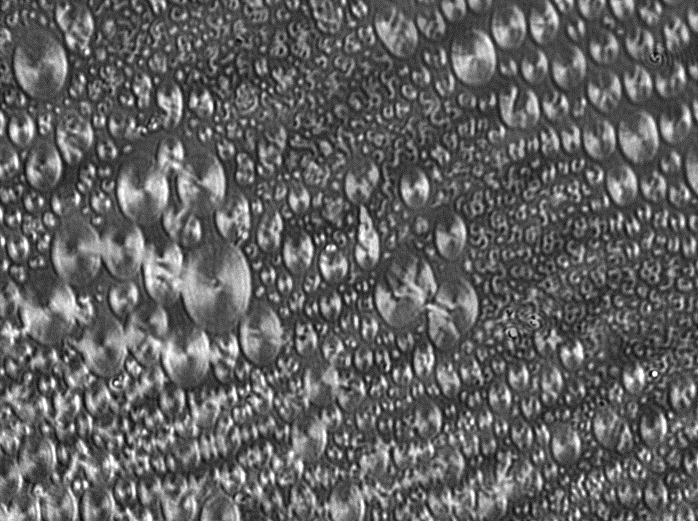Brewster angle microscope on:
[Wikipedia]
[Google]
[Amazon]

 A Brewster angle microscope (BAM) is a
A Brewster angle microscope (BAM) is a
Brewster Angle Microscopy
Microscopes Polarization (waves) Materials science 1991 introductions

 A Brewster angle microscope (BAM) is a
A Brewster angle microscope (BAM) is a microscope
A microscope () is a laboratory instrument used to examine objects that are too small to be seen by the naked eye. Microscopy is the science of investigating small objects and structures using a microscope. Microscopic means being invisi ...
for studying thin film
A thin film is a layer of material ranging from fractions of a nanometer ( monolayer) to several micrometers in thickness. The controlled synthesis of materials as thin films (a process referred to as deposition) is a fundamental step in many ...
s on liquid surfaces, most typically Langmuir films. In a Brewster angle microscope, both the microscope and a polarized light source are aimed towards a liquid surface at that liquid's Brewster angle, in such a way for the microscope to catch an image of any light reflected from the light source via the liquid surface. Because there is no ''p''-polarized reflection from the pure liquid when both are angled towards it at the Brewster angle, light is only reflected when some other phenomenon such as a surface film affects the liquid surface. The technique was first introduced in 1991.
Applications
Brewster angle microscopes enable the visualization of Langmuir monolayers or adsorbate films at the air-water interface for example as a function of packing density. They can be used either to study the properties of the Langmuir layer, or to indicate a suitable deposition pressure for Langmuir-Blodgett (LB) deposition. They can be used for example in the LB deposition of nanoparticles. Applications include: Monolayer/film homogeneity. When combined with a Langmuir-Blodgett Trough, observation can be performed during compression/expansion at known surface pressures. Optimizing the deposition parameters. Selecting optimal deposition pressure and other deposition parameters for LB coating. Monolayer/film behavior. Observing phase changes, phase separation, domain size, shape and packing. Monitoring of surface reactions. Photochemical reactions, polymerizations and enzyme kinetics can be followed in real time. Monitoring and detection of surface active materials. For example, protein adsorption and nanoparticle flotation. Lee et al. used a Brewster angle microscope to study optimal deposition parameters for Fe3O4 nanoparticles. Daear et al. have written a recent review on the usage of BAMs in biological applications.See also
*Brewster's angle
Brewster's angle (also known as the polarization angle) is an angle of incidence at which light with a particular polarization is perfectly transmitted through a transparent dielectric surface, with ''no reflection''. When ''unpolarized'' light ...
* Langmuir–Blodgett film
* Nanoparticle deposition
Nanoparticle deposition refers to the process of attaching nanoparticles to solid surfaces called substrates to create coatings of nanoparticles. The coatings can have a monolayer or a multilayer and organized or unorganized structure based on the ...
References
{{reflistExternal links
Brewster Angle Microscopy
Microscopes Polarization (waves) Materials science 1991 introductions